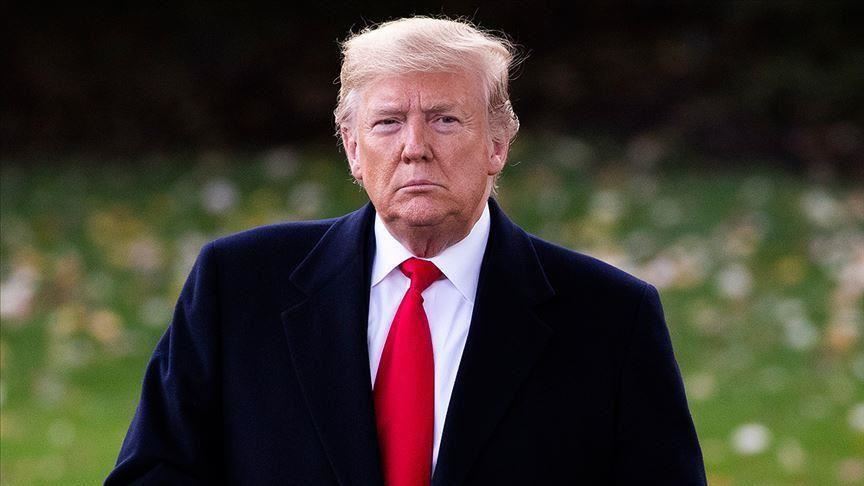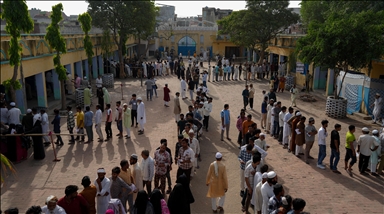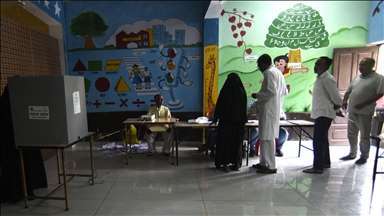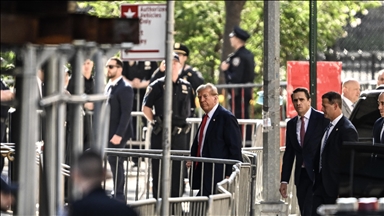
NEW DELHI
U.S. President Donald Trump will be accorded a grand reception during his visit to India starting Monday, but the possibility of a trade deal remains elusive as both the countries have ramped up protectionist measures against each other.
Trump, accompanied by First Lady Melania, daughter Ivanka and son-in-law Jared Kushner, is scheduled to travel to Ahmedabad, Agra, and New Delhi on Feb. 24 and 25. He will open the world's biggest cricket stadium and watch the sunset at the Taj Mahal, a Mughal era mausoleum.
Ahead of the visit, however, there have been talks about New Delhi and Washington agreeing on a trade package as a precursor to a major trade deal.
At an event in Las Vegas on Thursday, Trump gave mixed messages about prospects of a trade deal with Indian premier Narendra Modi. “We’re going to India and we may make a tremendous deal there. Maybe we’ll slow it down, we’ll do it after the election,” he said.
Earlier, he told journalists in Maryland: "We're not treated very well by India, but I happen to like Prime Minister Modi a lot... we can have a trade deal with India, but I’m really saving the big deal for later on."
The U.S. president's statement, however, was downplayed by India.
“It is important to understand the context in which the remarks were made,” Raveesh Kumar, spokesman of the Indian Ministry of External Affairs, said in his weekly press briefing.
"Please understand that the U.S. is India's largest trading partner in goods and services. Also do keep in mind that there has been a consistent growth in trade between the two countries over the last few years."
Trump's indication that the deal may not be sealed before U.S. elections in November was echoed by India's Foreign Ministry, which said it did not want to "rush into a deal".
Relations between the two countries soured in 2019 after India hiked customs duty on U.S. agricultural products and restricted imports of certain medical devices.
This was in response to Trump increasing in 2018 tariffs on steel and aluminum from India -- and elsewhere -- and stripping India of its preferential trade status.
Under the Generalized System of Preferences (GSP) program, 129 developing countries enjoyed tariff-free access to U.S. markets. India led the list of countries benefiting from this program, exporting $600 million worth of products to the U.S. in 2018.
While New Delhi wants the restoration of its privileged status, Washington seeks access to India’s huge poultry and dairy markets, and facilitate exports of stents and other medical devices.
Modest trade deal
It is possible the two sides announce some specific trade measures as India, according to sources, has hinted reduction in import tariffs on Harley-Davidson motorcycles in return of reinstatement of GSP privileges.
The limited agreement is expected to pave the way for a broader deal in the coming months.
Meanwhile, the U.S. tightening rules for H1-B visas have irked New Delhi. Along with doubling the visa fees, the annual income for qualification was also increased. This has reduced opportunities for Indians in America.
Dr. Anupam Srivastava, who works closely with both U.S. and Indian governments on projects relating to high-technology trade and security issues, said the Trump administration’s preferred approach is confrontational and public airing of differences, which ends up reducing the room for political maneuvering on both sides.
“Over the past few months, Robert Lighthizer, the U.S. commerce secretary, has led multiple rounds of negotiations with the Indian side, led by Piyush Goyal, India’s minister for commerce and industry. While they have narrowed down the areas of disagreements, completing a comprehensive trade agreement is highly unlikely. At the most, the two sides might announce that they intend to complete the negotiations within the next year or so,” he told Anadolu Agency.
Sameer Lalwani, senior fellow Asia Strategy and South Asia director at the Stimson Center, said the US-India trade disputes are longstanding, in part because a substantial constituency of India's ruling party has autarkic and protectionist leanings.
"But perhaps the bigger issue is that India now seems afraid to compete -- from small and medium enterprises to large business groups," Lalwani told Anadolu Agency.
While the U.S. is the second-largest trading partner of India after China, India is the ninth-largest trading partner for the U.S.
In 2018, $142.6 billion was the worth of goods and services traded between the U.S. and India. India exported $83.9 billion to the United States and imported $58.7 billion.
According to the U.S. Commerce Department, exports of goods and services to India generate 197,000 jobs in the U.S.
Anadolu Agency website contains only a portion of the news stories offered to subscribers in the AA News Broadcasting System (HAS), and in summarized form. Please contact us for subscription options.







